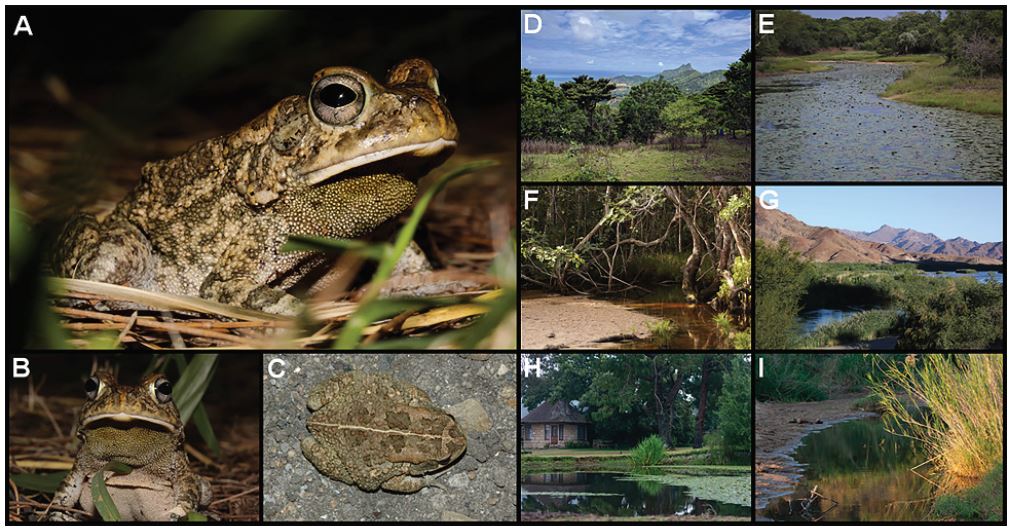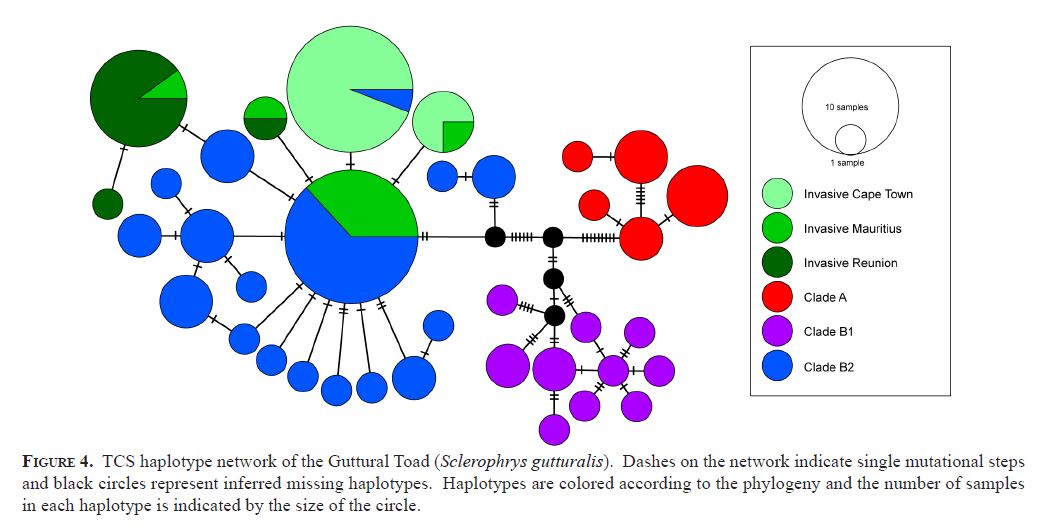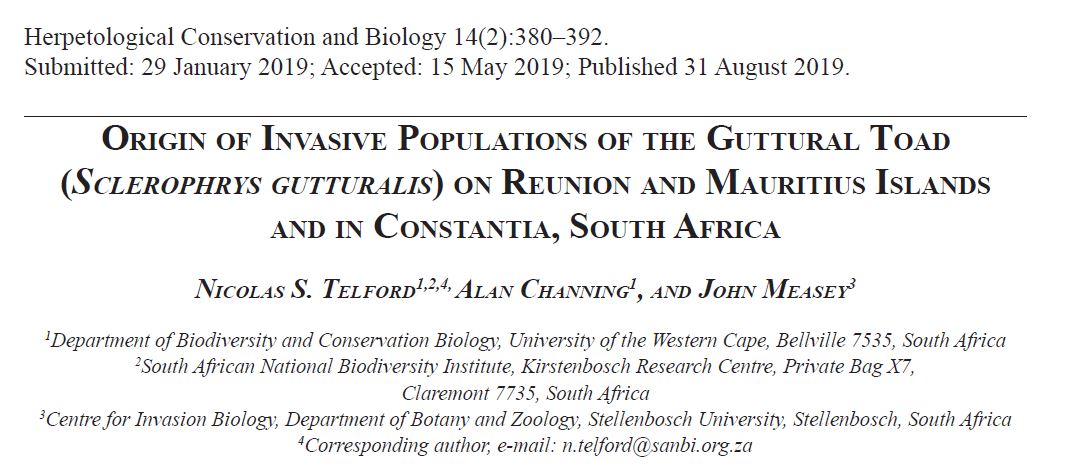Where did the invasive Guttural Toads come from?
The Guttural Toad, Sclerophrys gutturalis, has a large distribution in Africa, from Ethiopia in the North to South Africa in the South, and from Angola in the West to Mozambique in the East. That’s one of the largest distributions of any of Africa toad. No wonder then that there are also some invasive populations of Guttural Toads, which the MeaseyLab has been studying for the last 5 years or so (see more recent stories on Guttural Toads, click here).
Guttural toads have been invasive in Mauritius and Reunion for nearly 100 years (since ~1922), and have been in Constantia (near Cape Town) for another 20 years, but where did those colonising toads come from? This was the central question behind the MSc study of Nick Telford (now of SANBI, but then of UWC under the supervision of Alan Channing), and now a paper published today in Herpetological Conservation and Biology.
Nick took tissues of toads that had been collected from all over the continent (with some help from Alan and John), plus those sequences already published on Genbank, and to them he collected intensively in South Africa. We also obtained tissues from each of the invasive populations: Constantia, Mauritius and Reunion. He sequenced a common mitochondrial gene and made a phylogeny with all the sequences. The result was somewhat surprising: all of the invasive populations shared alleles which were naturally found around the South African port city of Durban.
The result fits in well with the historical information already published on the Guttural Toad invasions. A man called Gabriel Regnard, a Director of the dock management company in Mauritius, was known to have introduced them to Port Louis. It seems most likely that Regnard had sourced the animals from a nearby port. From there they were introduced to Reunion in 1927. Guttural Toads were first heard calling from the garden of Jonathan Ackerman, soon after the family relocated from Durban in 2000. The genetics suggests that the animals moved may have been eggs or tadpoles that were moved unwittingly with ornamental pond plants.
Knowing that all toads originated from Durban, has made it easier to study these invasions together, as we have been able to compare both invasive populations and those of the source in one study. With the publication of this genetic study we can continue to explore invasions of the Guttural Toad. There are also some oddities in the genetics which suggest some more investigation, like the most southerly records of animals from Port St Johns and Coffee Bay, which appear to have the genetic signature of animals from Gauteng.
You can find the publication Open Access here:
Telford, N., Channing, A. & Measey, J. (2019) Origin of invasive populations of the Guttural toad Sclerophrys gutturalis Herpetological Conservation & Biology. 14(2):380–392.



